



 sex comedies and horror spoofs
sex comedies and horror spoofs 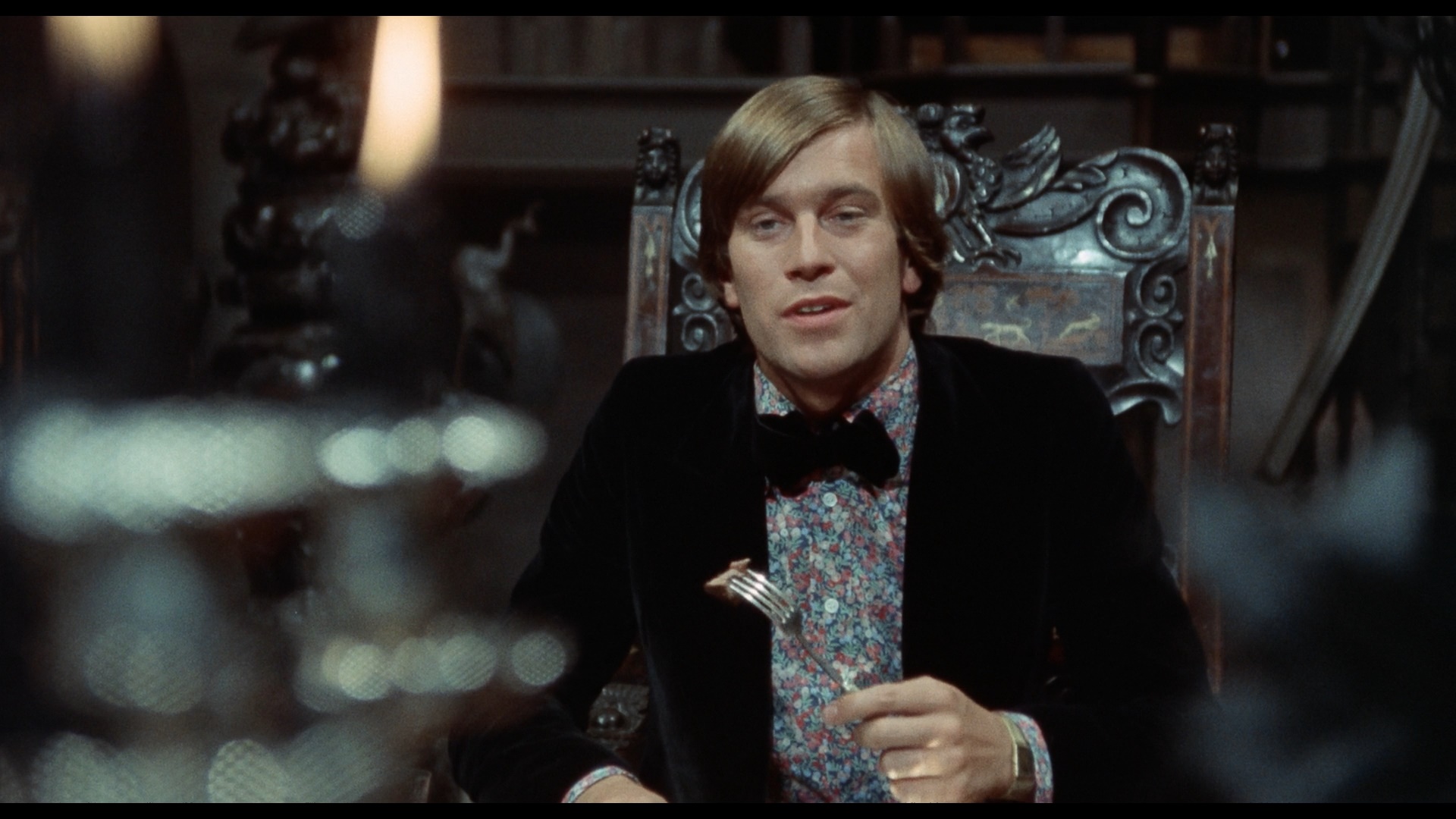 were both familiar staples in theaters well into the 1970s, with the latter represented by everything from Carry On Screaming! to The House in Nightmare Park. It was inevitable that someone would combine the two, though few could have anticipated how nuts the results would be with Vampira, a goofy comedy that combines David Niven with a roster of Hammer Films vets and the very likable Teresa Graves, who was starring in TV's Get Christie Love! at the time. The film was directed by Clive Donner on the strength of two comedy hits a few years earlier, What's New Pussycat? and Here We Go Round the Mulberry Bush, and he would later return to farcical territory after this with The Nude Bomb and Charlie Chan and the Curse of the Dragon Queen. Originally released in the U.K. by Columbia (as part of its Columbia-Warner Distributors arrangement at the time), Vampira was picked up for U.S. distribution by AIP just as Mel Brooks' Young Frankenstein became a massive box office hit. Naturally they decided to call it Old Dracula (with Andy Warhol's Dracula later retitled Young Dracula for a 1976 reissue), and the title has stuck with it despite the fact that all circulating home video versions now stick with the original Vampira in the main titles.
were both familiar staples in theaters well into the 1970s, with the latter represented by everything from Carry On Screaming! to The House in Nightmare Park. It was inevitable that someone would combine the two, though few could have anticipated how nuts the results would be with Vampira, a goofy comedy that combines David Niven with a roster of Hammer Films vets and the very likable Teresa Graves, who was starring in TV's Get Christie Love! at the time. The film was directed by Clive Donner on the strength of two comedy hits a few years earlier, What's New Pussycat? and Here We Go Round the Mulberry Bush, and he would later return to farcical territory after this with The Nude Bomb and Charlie Chan and the Curse of the Dragon Queen. Originally released in the U.K. by Columbia (as part of its Columbia-Warner Distributors arrangement at the time), Vampira was picked up for U.S. distribution by AIP just as Mel Brooks' Young Frankenstein became a massive box office hit. Naturally they decided to call it Old Dracula (with Andy Warhol's Dracula later retitled Young Dracula for a 1976 reissue), and the title has stuck with it despite the fact that all circulating home video versions now stick with the original Vampira in the main titles.  Countess Vampira, who's been languishing comatose for five decades after a bout of food poisoning. Along with his servant, Maltravers
Countess Vampira, who's been languishing comatose for five decades after a bout of food poisoning. Along with his servant, Maltravers 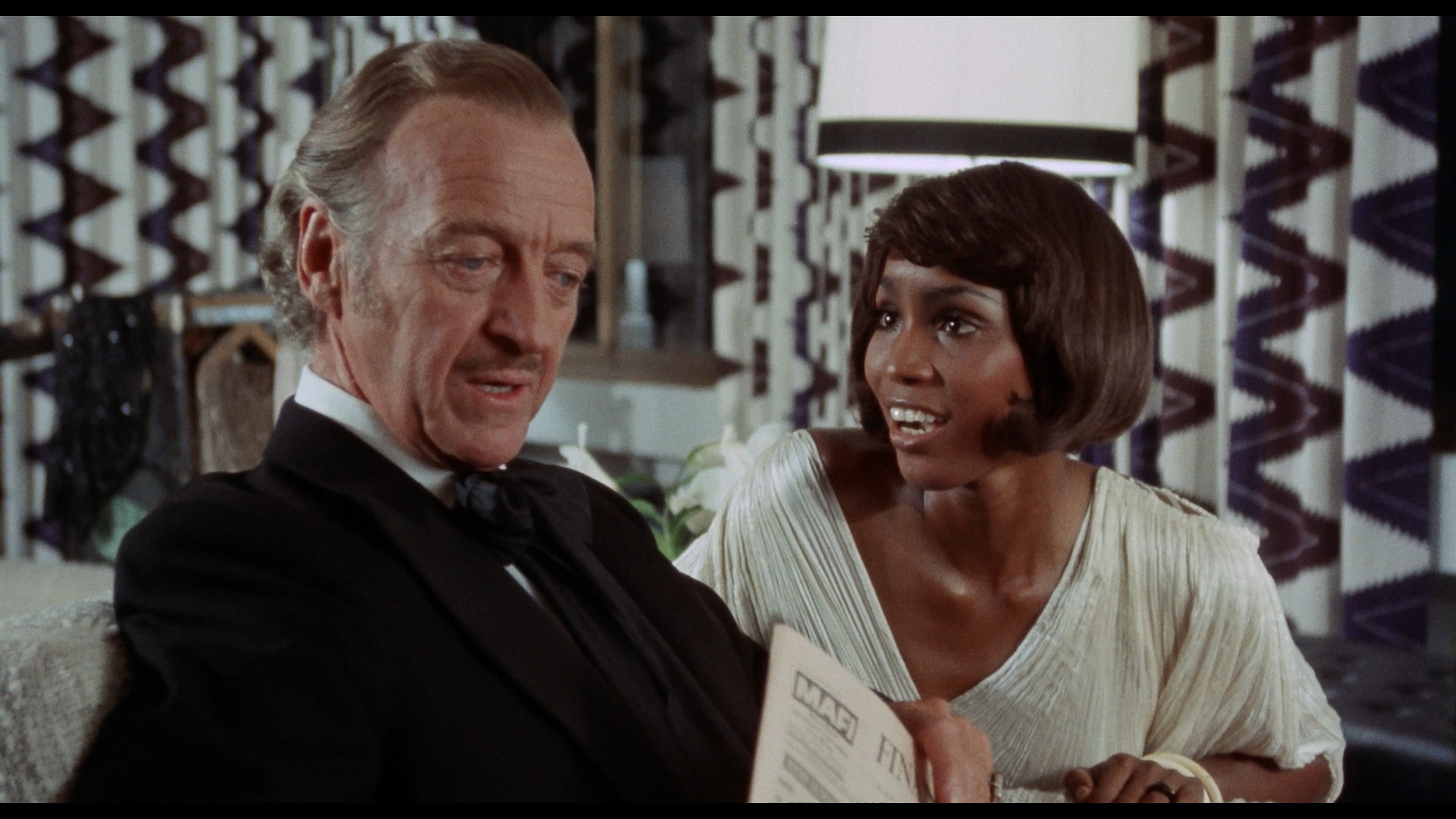 (Bayliss), he arranges for a big story and photo shoot in his home for his favorite magazine, Playboy (which features the best jugulars), complete with noted writer Marc (Psychomania's Henson) and a slew of beautiful models. Thanks to a snafu involving Dracula's latest snack, German student Helga (Blood on Satan's Claw's Hayden), that turns her into a vampire just in time for the big welcome dinner, Drac has to dress up in traditional vampire garb for his guests complete with ooga-booga party tricks to keep them entertained. However, it's all part of a larger scheme to drug them and siphon off blood to find the right formula to revive Vampira... who, for reasons you won't believe, ends up reviving but is now black (and played by Graves). Dracula is more than happy and declares "Black is beautiful," but to keep the neighbors from talking, he embarks on another hunt for a cure. Meanwhile Marc's girlfriend, Angela (Women in Love and Nightmare's Linden), is imperiled by the undead pair while Marc himself decides to become an amateur vampire hunter.
(Bayliss), he arranges for a big story and photo shoot in his home for his favorite magazine, Playboy (which features the best jugulars), complete with noted writer Marc (Psychomania's Henson) and a slew of beautiful models. Thanks to a snafu involving Dracula's latest snack, German student Helga (Blood on Satan's Claw's Hayden), that turns her into a vampire just in time for the big welcome dinner, Drac has to dress up in traditional vampire garb for his guests complete with ooga-booga party tricks to keep them entertained. However, it's all part of a larger scheme to drug them and siphon off blood to find the right formula to revive Vampira... who, for reasons you won't believe, ends up reviving but is now black (and played by Graves). Dracula is more than happy and declares "Black is beautiful," but to keep the neighbors from talking, he embarks on another hunt for a cure. Meanwhile Marc's girlfriend, Angela (Women in Love and Nightmare's Linden), is imperiled by the undead pair while Marc himself decides to become an amateur vampire hunter.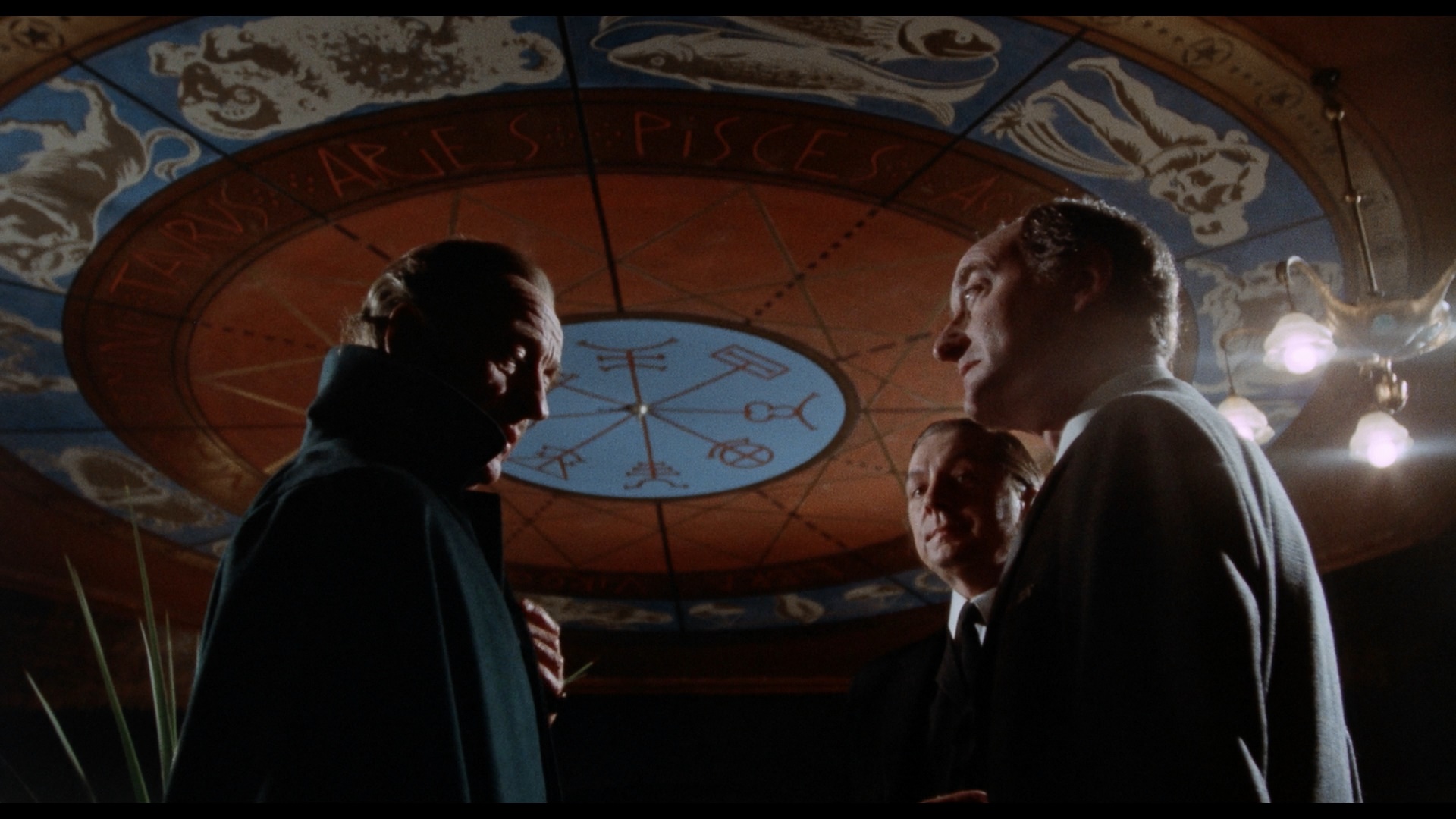 gags that elicit more of a faint smile than a guffaw, but it's all nostalgic fun complete with swinging nightclub scenes that would've already looked passé two years earlier in Dracula A.D. 1972. The soundtrack is one of the strongest aspects, relying on a lively score by David Whitaker
gags that elicit more of a faint smile than a guffaw, but it's all nostalgic fun complete with swinging nightclub scenes that would've already looked passé two years earlier in Dracula A.D. 1972. The soundtrack is one of the strongest aspects, relying on a lively score by David Whitaker 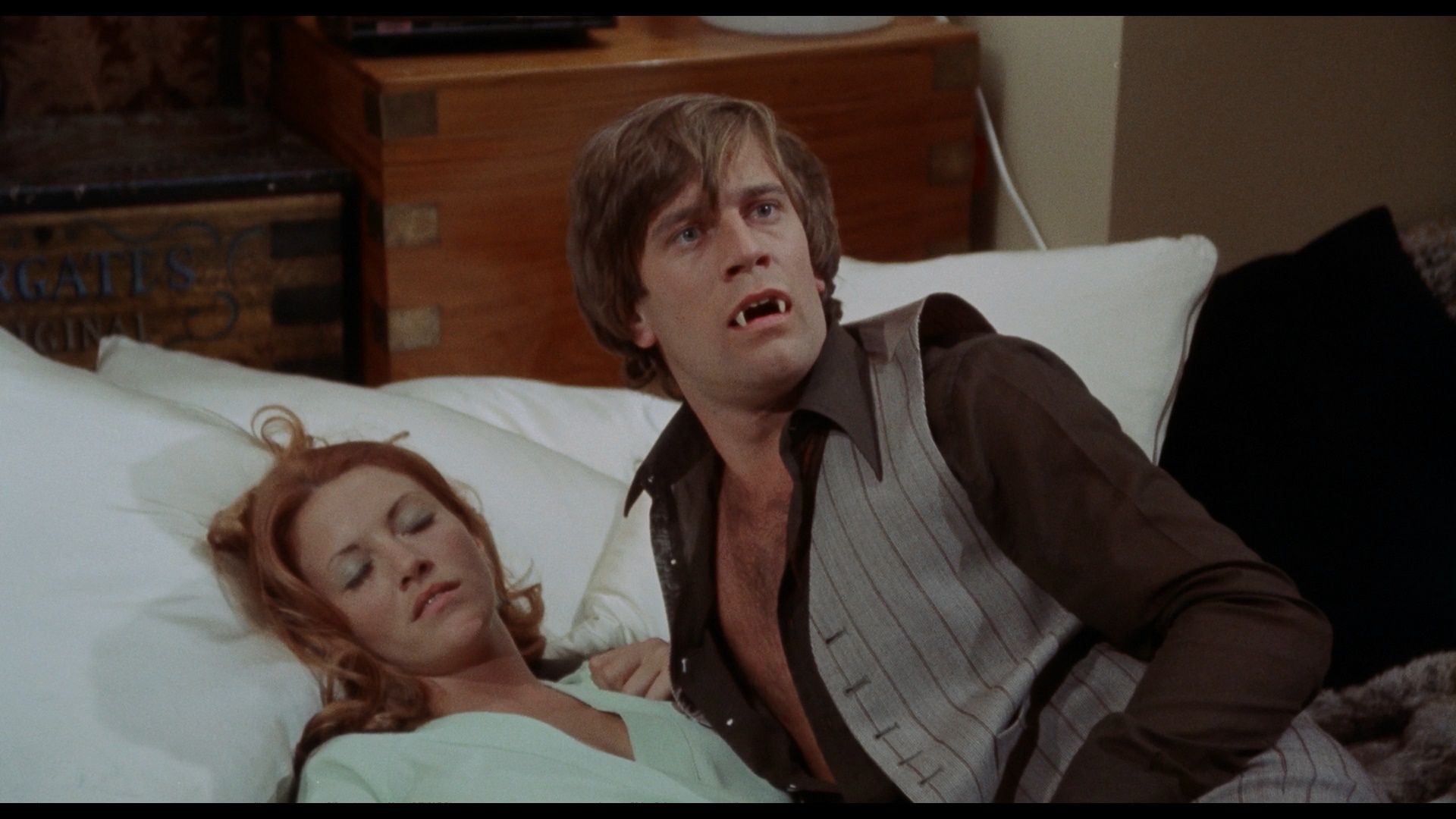 (Vampire Circus, Scream and Scream Again) with a wild theme song capping it off by "The Majestics" and written by none other than Anthony Newley. Technically the film is all over the place, with some truly lovely cinematography by the great Anthony Richmond (Don't Look Now, Candyman) bumping against some very ragged editing complete with some of the sloppiest jump cuts you've ever seen. As the synopsis should make clear, this is also very much a product of its time with some amusing nods to the blaxploitation craze that was in full force at the time, though this pays off with a climactic punchline that nobody would even dare go near today. British horror fans will probably get the most out of this one thanks to the parade of familiar faces on parade; in addition to the ones mentioned above, you also get the likes of Veronica Carlson (highly underused and oddly dubbed) and Freddie Jones (falling afoul of Vampira on a plane flight), not to mention Nigerian-born model Minah Bird (who also turned up in films like The Stud), Monty Python regular Carol Cleveland, and House of Whipcord's Penny Irving.
(Vampire Circus, Scream and Scream Again) with a wild theme song capping it off by "The Majestics" and written by none other than Anthony Newley. Technically the film is all over the place, with some truly lovely cinematography by the great Anthony Richmond (Don't Look Now, Candyman) bumping against some very ragged editing complete with some of the sloppiest jump cuts you've ever seen. As the synopsis should make clear, this is also very much a product of its time with some amusing nods to the blaxploitation craze that was in full force at the time, though this pays off with a climactic punchline that nobody would even dare go near today. British horror fans will probably get the most out of this one thanks to the parade of familiar faces on parade; in addition to the ones mentioned above, you also get the likes of Veronica Carlson (highly underused and oddly dubbed) and Freddie Jones (falling afoul of Vampira on a plane flight), not to mention Nigerian-born model Minah Bird (who also turned up in films like The Stud), Monty Python regular Carol Cleveland, and House of Whipcord's Penny Irving.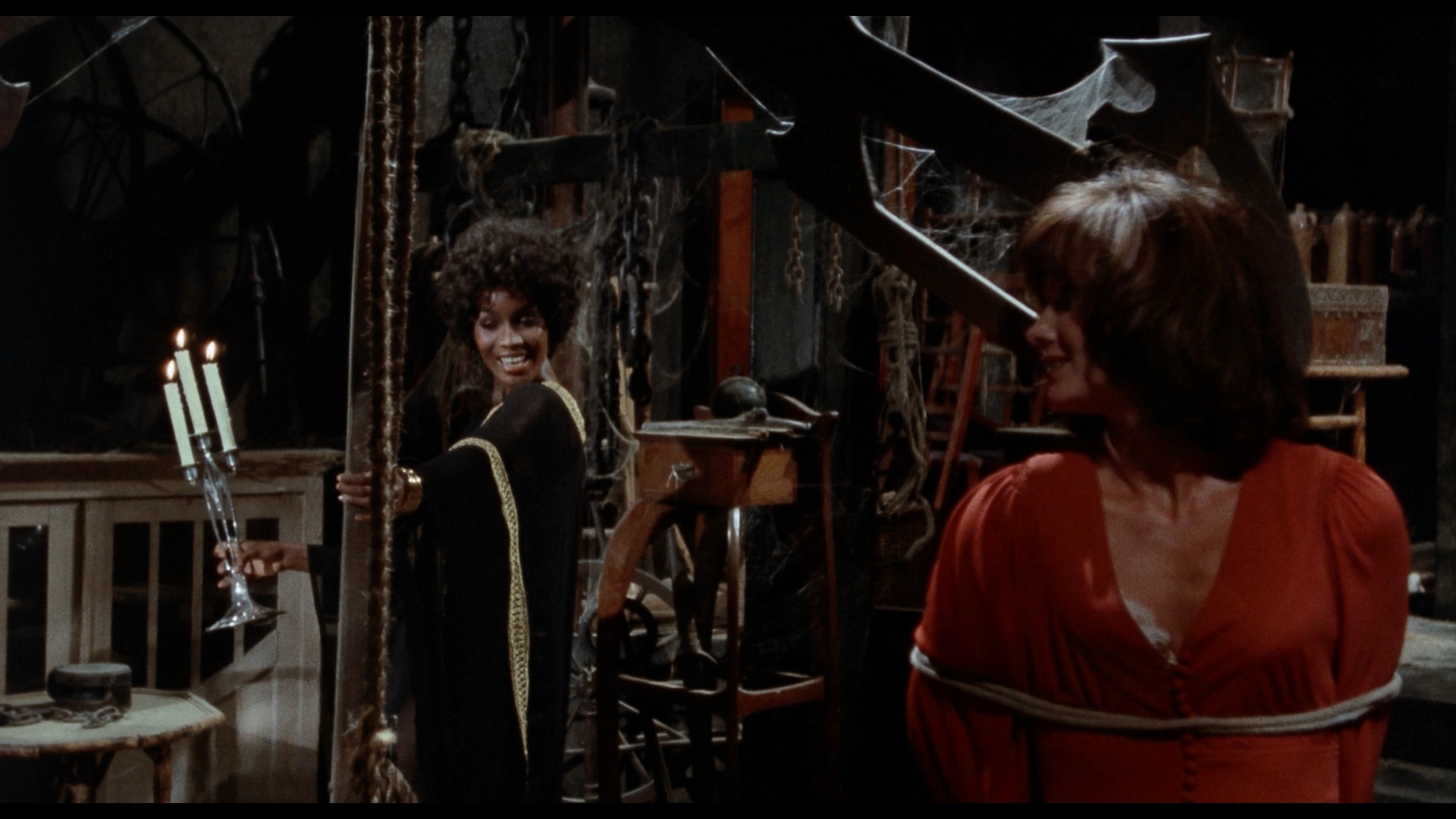 and the crazy AIP theatrical trailer. In 2017, U.K. label Fabulous Films issued the film as separate, bare
and the crazy AIP theatrical trailer. In 2017, U.K. label Fabulous Films issued the film as separate, bare 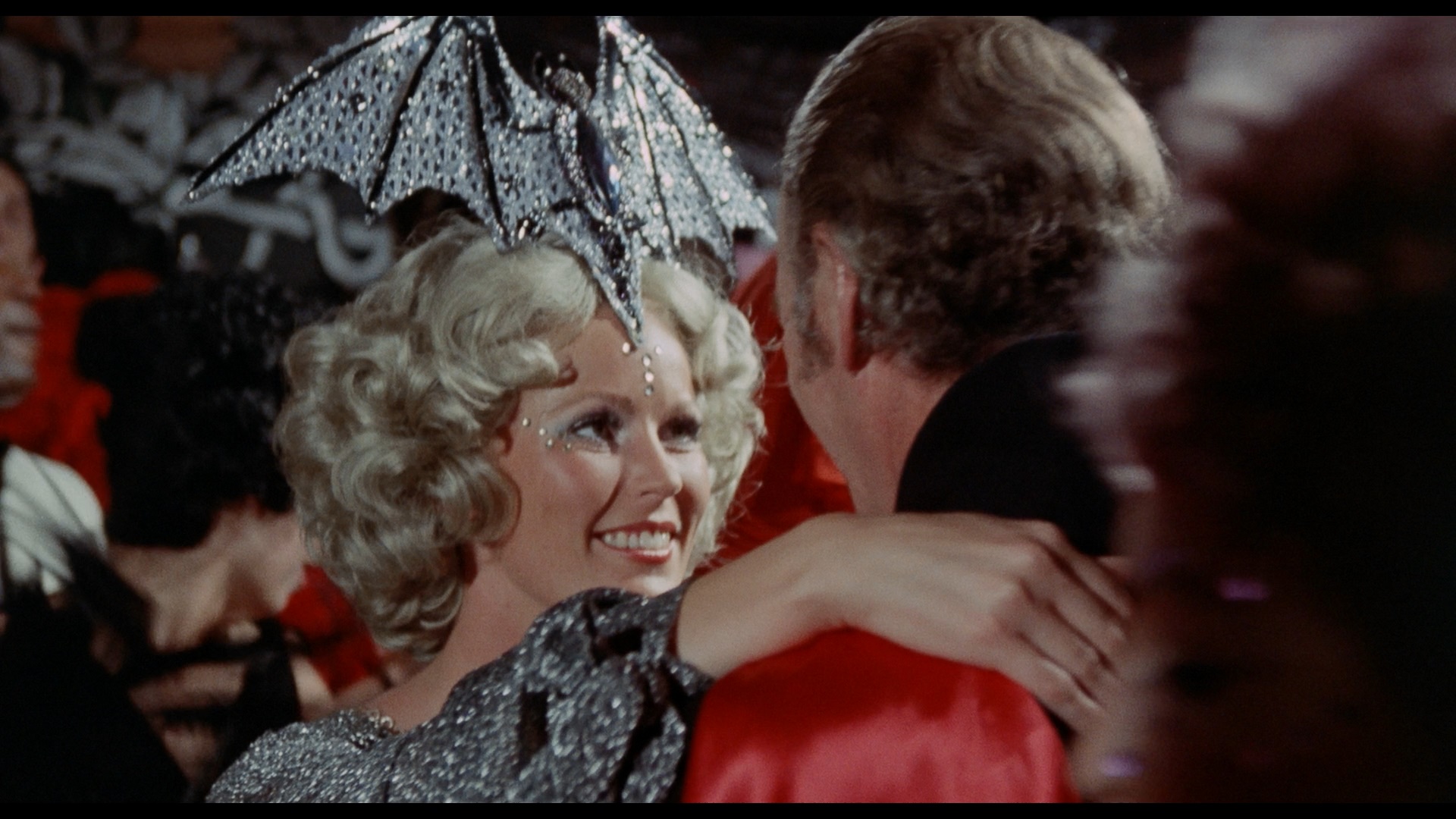 bones Blu-ray and DVD editions; unfortunately the transfer was a complete disaster. Blown out, harsh, and featuring dull, gray black levels as well as sickly color timing, it was a huge disappointment compared to the rich and impressive source used for MGM's earlier releases.
bones Blu-ray and DVD editions; unfortunately the transfer was a complete disaster. Blown out, harsh, and featuring dull, gray black levels as well as sickly color timing, it was a huge disappointment compared to the rich and impressive source used for MGM's earlier releases.
![]()